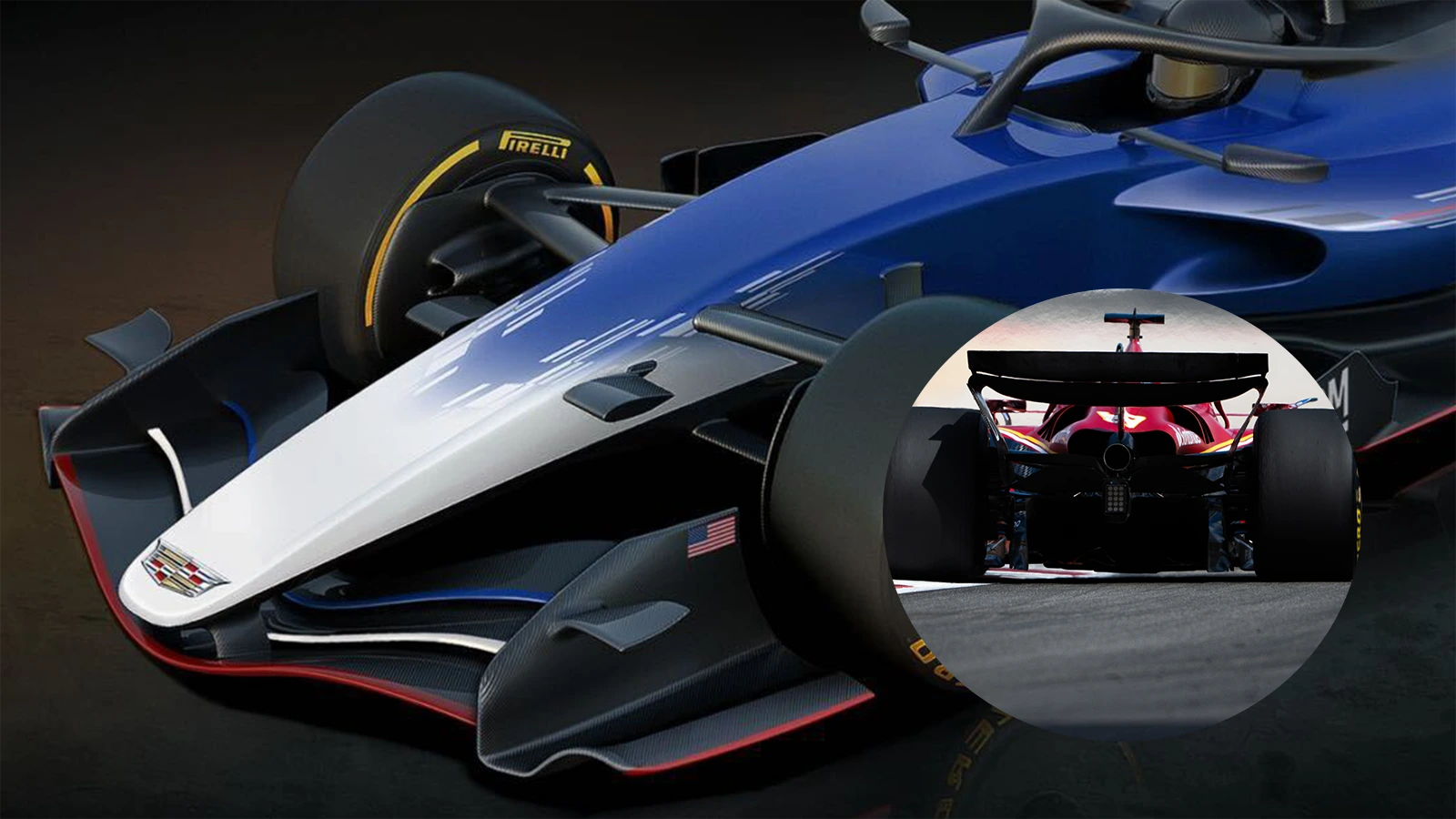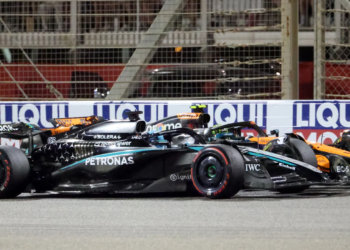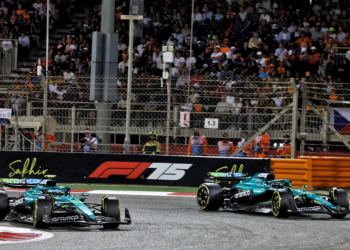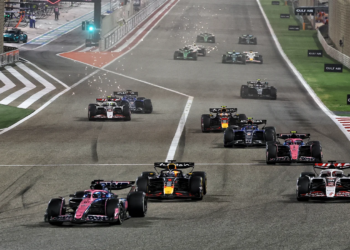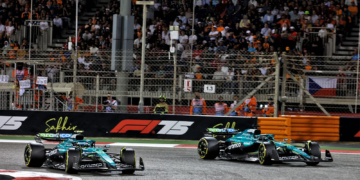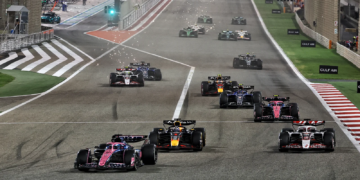Cadillac is reportedly considering strengthening its ties with Ferrari via a suspension supply ahead of its Formula 1 debut in 2026.
With Cadillac and F1 announcing the American marque will join the grid as an 11th team next year as recently as November, plenty of work must be done to ensure it’s ready to make its 2026 debut.
A significant hurdle has already been overcome in the form of the powertrain and whilst Cadillac has begun work on its bespoke unit, that won’t be race-ready until 2028 and so the American marque opted to sign an engine and gearbox customer deal with Ferrari, taking the slot that will be vacated by Sauber next year when the Swiss-outfit transforms into the Audi works entry.
However, according to Autosport, Cadillac is considering employing the use of Ferrari suspension in addition to the Italian marque’s powertrain.
Such a move is not uncommon in F1, with Haas having operated a similar model since its entry to the sport in 2016.
Moreover, Racing Bulls uses the suspension and powertrain from sister team Red Bull and Aston Martin currently uses the enter rear end from Mercedes, a deal which will end this year in time for the Silverstone-based squad to begin its works engine partnership with Honda.
With little over a year before Cadillac makes its F1 GP debut, there’s scant time to prepare everything needed to ensure two race-ready cars can compete on motorsport’s biggest stage and setting a suspension supply deal with Ferrari gives the American team one less thing to worry about.
Instead, Cadillac can focus its resources elsewhere, such as aerodynamic testing, which is being carried out at Toyota’s Cologne wind tunnel, as well as expanding its workforce.
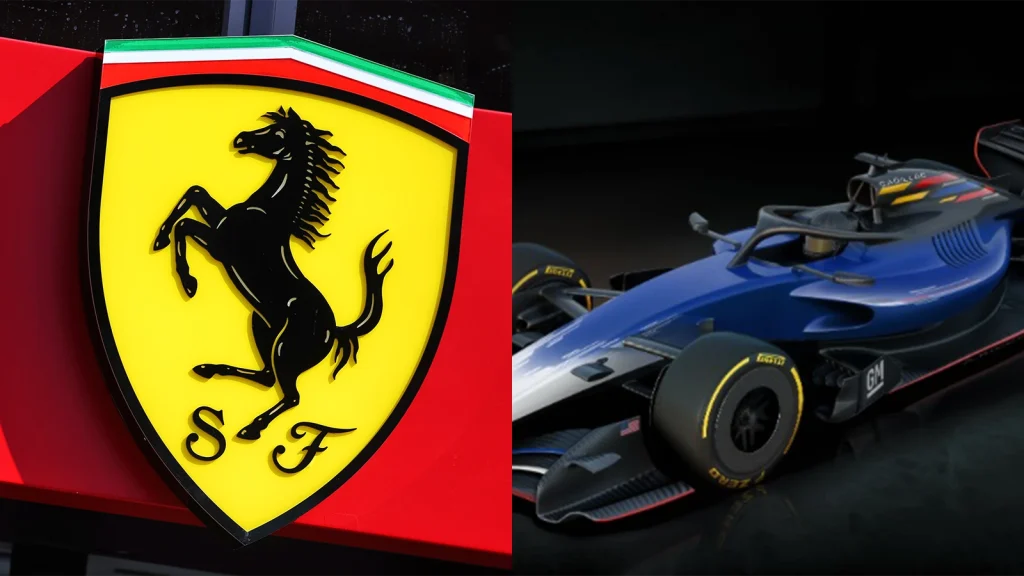
Debating Cadillac’s advantage
There’s reason to believe that Cadillac, which will be granted 115% wind tunnel and CFD testing thanks to F1’s ATR regulations, will have an advantage over some of the smaller teams currently on the grid.
The likes of Racing Bulls, Haas and Williams must divert resources between 2025 development and the significant challenges of preparing cars for 2026, where the regulations are changing dramatically.
Cadillac meanwhile can focus all its attention and the entirety of its aerodynamic testing on 2026 alone, unburdened by the fact it has no presence on the grid in 2025.
However, when asked at the Qatar GP whether Cadillac would have any sort of head start, Williams, Aston Martin and Racing Bulls representatives weren’t concerned.
“They should fall under FIA ATR and also cost cap regulations in 2025,” said Williams Team Principal James Vowles.
“So is there a head start? It’s potential this year, for example, when they’re completely outside of any caps, maybe.
“But I think it’s controlled fairly well under some FIA regulations. It’s for the FIA to regulate next year.”
Aston Martin Chief Trackside Officer (then Team Principal) Mike Krack added: “I think it’s a monumental task to try now setting up a team for 2026 with also a completely different set of regulations.
“I think from January 1, it’s only 12 months to set all this up and make a car,” Krack continued.
“I think that is a big task. So even if there was a small head start, I think it will balance out very quickly.”
This was a sentiment shared by Racing Bulls Team Principal Laurent Mekies, who sai:d “I think as much as you can consider 2024 as being a space where you could have a head start, by the time January 1st turns up, then everything will be well controlled by the regulations and the task is still huge after that.”
READ MORE – Ferrari announces multi-year F1 engine agreement with Cadillac

